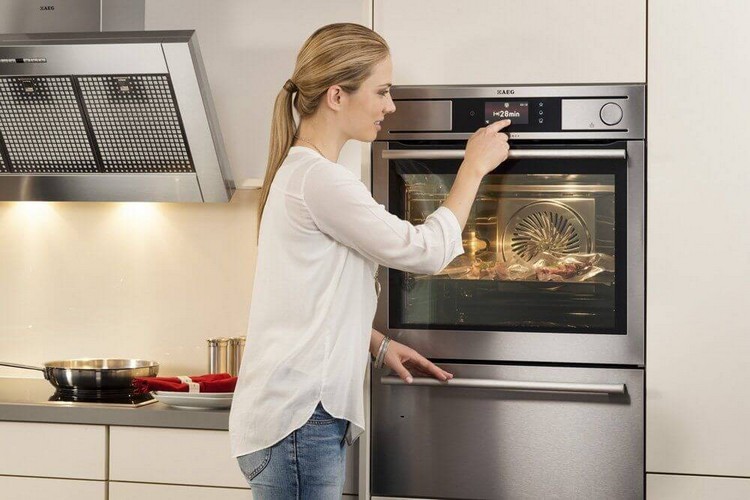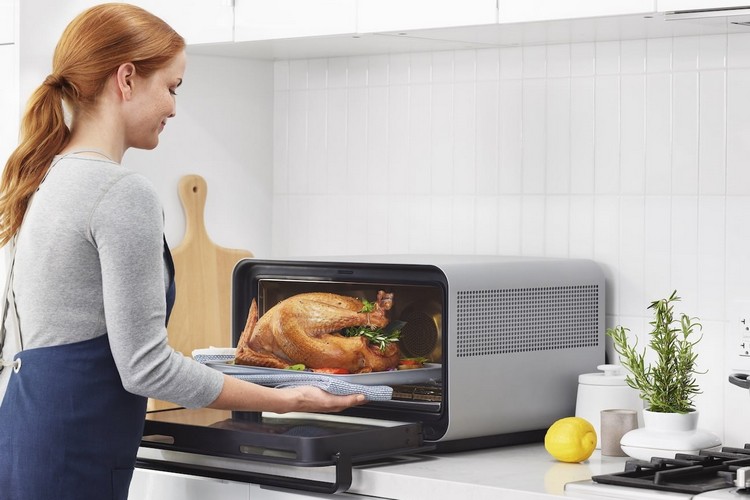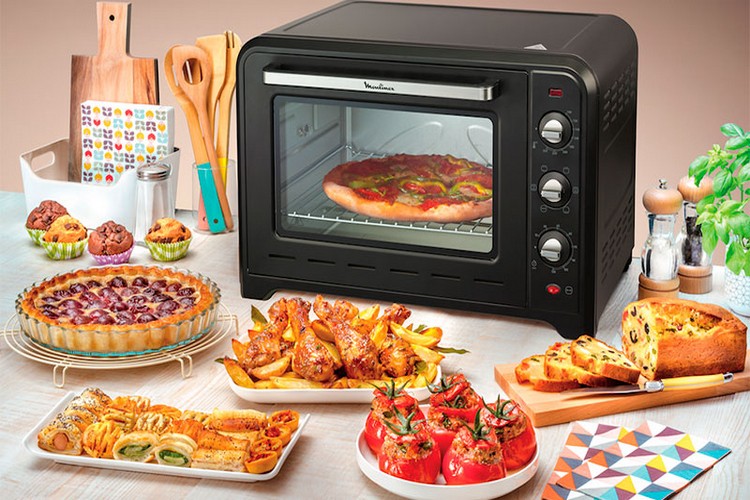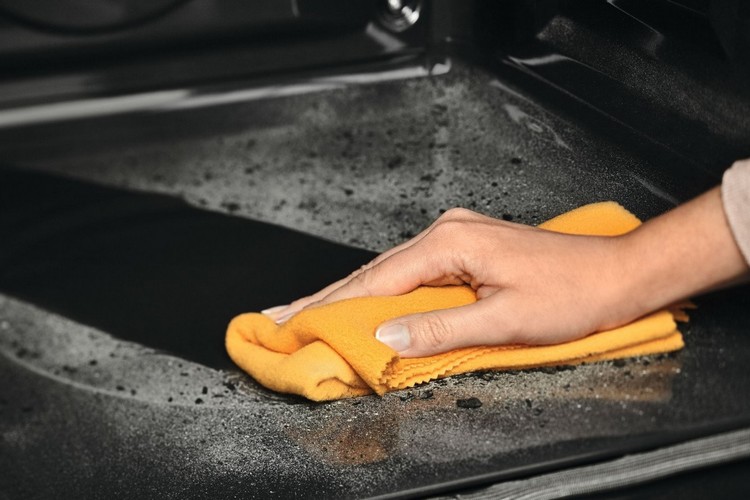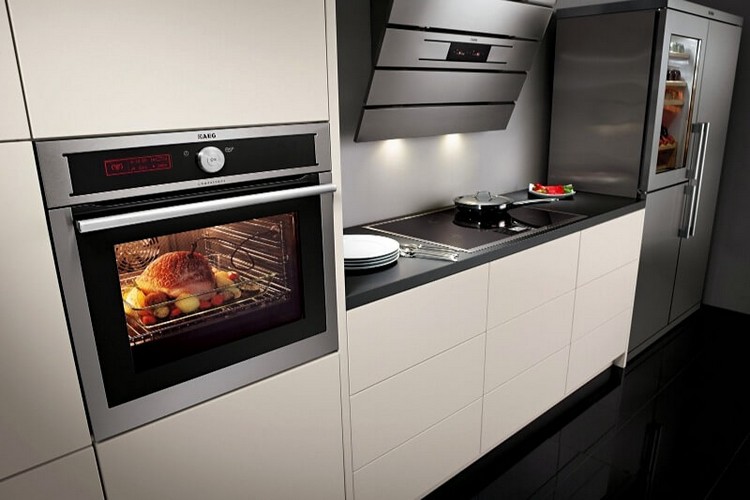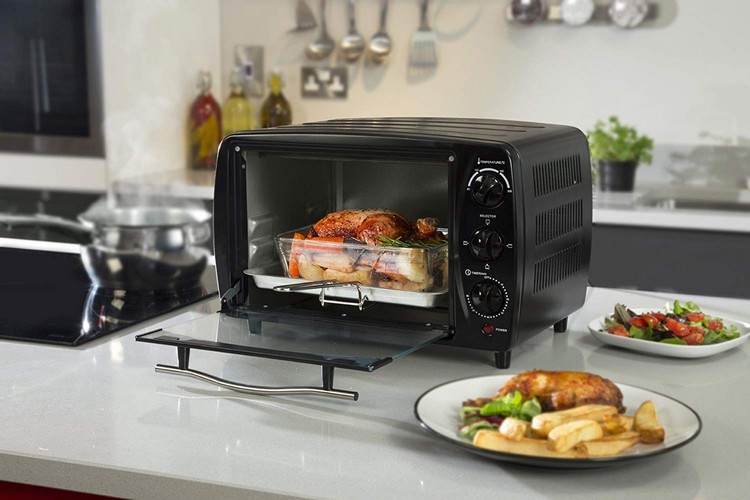What is better - oven or mini oven: comparison of devices, their advantages and disadvantages
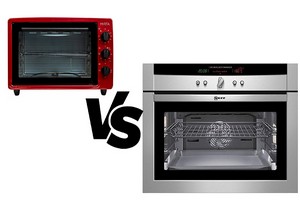 For baking, you can use two different types of kitchen appliances: ovens and mini ovens. The first are stationary, the second - mobile.
For baking, you can use two different types of kitchen appliances: ovens and mini ovens. The first are stationary, the second - mobile.
But what is the best choice for domestic use? What are the main advantages and disadvantages of each mini baking ovens and ovens? What should the average buyer be aware of in advance, even before buying such equipment?
Contents
The main features of ovens
An oven is a stationary oven for baking, grilling, and cooking meat dishes. It can be a separate piece of equipment, or be built into a gas stove.
As a heating element is used either a gas burner or an electric heating element.
Conventionally divided into:
- Dependent. These are the ones that are built into gas stoves and cooking surfaces.
- Independent. That is, they are placed separately. As a rule, such ovens are used only in catering establishments, as they have a large volume and are designed for quick baking, heating food or maintaining a set temperature.
The number of burners, as a rule, only one. Located at the bottom. But for a more proper distribution of hot air there is also an upper heating element, more often - electric. And it is also used for grilling.
Most modern ovens also have 1 or 2 spit holders (large and small).
The main characteristics of mini ovens
In 99% of cases have exactly an electric heating element, which makes them mobile. After all, in order to operate them, it is simply necessary to plug them into a socket. Visually similar to a microwave oven. They are designed for only 1 - 2 trays.
But they are often supplemented with the following functions:
- grill (small or large);
- Toaster (there is a special compartment for making hot toast).
Due to the small volume of the baking chamber, they heat up to the desired temperature rather quickly. They consume a relatively small amount of electricity (if compared to traditional electric ovens).
What is better - an oven or a mini oven
And to understand which variant of the oven is better, you need to understand the advantages and disadvantages of each of the specified type, as well as conduct a comparative assessment according to their characteristics.
Dimensions
Mini ovens are more compact and mobile. As a rule, the volume of the inner chamber, where the baking is done, rarely exceeds 80 - 100 liters. A great option for those kitchens where space is limited and it is important to save every available square meter. But at the same time, you can cook only one dish at a time in such an oven.
Ovens in most cases are more spacious, designed to set 2 or more pans at once. And that allows you to cook several dishes at the same time. And due to the greater volume such ovens often have a fan (convection), and convenient lighting (which is often lacking in mini-ovens), and several mounts for rotisserie (for grilling).
Functionality
Ovens are more functional. But, for example, the same toaster is replaced only by professional models designed for use in catering establishments.
Therefore, in terms of functionality, sometimes it is preferable to the mini-oven. Especially if the oven is not planned to use particularly often, and it is used mainly for heating or baking pizza (if statistics are to be believed, then about 60% of buyers use such a scenario).
So in terms of functionality should be based on your own needs.
Heating rate, energy consumption
Mini ovens heat up faster because of the small volume of the baking chamber. Literally 2 minutes after you turn it on, it's already 150 to 200 degrees inside.
But gas ovens are more economical. After all, they consume relatively little gas, and prices for it - lower than for gas.
Ease of use, care
Mini ovens are more compact, convenient. And due to the non-stick coating they are also quite easy to care for. Manufacturers recommend using special detergents for cleaning the inner chamber without abrasive components (which theoretically can damage the enamel), as well as wipes for microwave ovens. Cleaning should be done after each baking.
Ovens, on the other hand, often have an optional automatic cleaning system.
There are 4 variations:
- Traditional. That is, the cleaning is done entirely manually.
- Hydrolytic. A container of water is placed in the oven, which is heated to boiling temperature. And at the expense of steam - the rest of grease and burns are dissolved. Next, it will only be necessary to wipe the inner surface with a sponge with ordinary soap.
- Pyrolytic. The most "aggressive" option of automatic cleaning of the oven, when the inner chamber is heated up to 500 degrees. And due to this, all residual dirt is literally burned off. As a rule, this automatic cleaning option is only used in professional ovens designed for catering facilities.
- Catalytic. The most modern variant. The essence of this method is the use of special enamel, which acts as a catalyst and oxidizes grease. Therefore, it will not be a problem to remove it manually in the future.
Safety and durability
Ovens are more durable. Moreover, for them there is the possibility of replacing the burners or heating elements on their own.
And due to the fact that the manufacturer is virtually unlimited in the size of such appliances, cabinets are equipped with triple walls and heat-resistant glass. Therefore, it is virtually impossible to get burned when working with such equipment.
Mini ovens are more compact. As a rule, there are two-layer walls, glass - similarly consists of two plates (thinner). And to repair them is much more difficult, as a rule, for this necessarily have to go to an authorized service center.
Design, price
Ovens cost more due to the greater functionality, the volume of the baking chamber. But they are preferred by those who frequently bake. And the design of cabinets is rarely carefully worked on. The exception is dependent ovens, which are part of the gas stove. There's a wide range of models and designs, including "retro."
Mini ovens are designed for independent installation. Therefore, they often use a more elaborate design, so that such appliances fit into any interior. They are cheaper, although there are models that will cost the same price as a full oven (especially if it is a modern model with a touch panel to control and toaster functions).
Advantages and disadvantages of ovens
If we focus on the reviews of buyers themselves, we can highlight the following advantages of ovens:
- Greater functionality.
- Easier to clean. Especially those models that have a partially automatic cleaning of the baking chamber.
- Cheaper to operate. Relevant only for those cabinets that use gas.
- Dependent models also act as a cooking surface. There are both gas and induction heating - there is a lot to choose from.
The main disadvantages of ovens:
- Take up more space in the kitchen.
- Take longer to heat up. And if it is a model that uses gas, it also requires pre-venting the room before turning on (a basic safety requirement). And you can use such an oven only if there is functioning ventilation, because when the cabinet burns a lot of oxygen.
- Not mobile. That is not the best option for those who often have to move.
Advantages and disadvantages of mini ovens
The key advantages of mini ovens are:
- Compact. No larger in size than the same microwave oven.
- They heat up quickly. In 1 - 2 minutes you can start baking. The presence of ventilation is not a necessary requirement. The main thing is a socket designed for a load over 16A (on average, the mini-oven consumes from 2 to 3 kW of electricity).
- Have a more elaborate design, so they fit into almost any kitchen interior.
Disadvantages of mini-stoves:
- Less extensive functionality, although manufacturers have been working carefully on this lately.
- Not suitable for cooking multiple dishes at the same time. There is usually only 1 or 2 trays, but the temperature in the entire chamber will be the same.
- More difficult to clean. The automatic cleaning function of the baking chamber is usually not provided. Only the "flagship", the most expensive models may use a special non-stick enamel.
Conclusion .
Most buyers agree on the following opinion:
- For those who want to save space in the kitchen, as well as often move and not very actively use the oven, the best choice is an electric mini oven. And it is not necessary to buy the most technically advanced model. The principle of heating they all have the same. It is better to pay attention to the presence of convection, as well as internal lighting.
- For those who do baking often, it is better to give preference to full-fledged ovens. Most buyers dependent, that is, built into the gas stove, will be more than enough for domestic tasks. And when buying, you should pay attention to the presence of features such as automatic shutoff, the number of internal burners, rotisserie mounts.
Bottom line, ovens are better on most parameters. But if the oven is planned to use rarely, it is better to choose a mini-oven. The demand for such equipment is quite large, so offers from different manufacturers - a lot.
Useful video
About what is better - the oven or the mini oven, tell us in the video:



